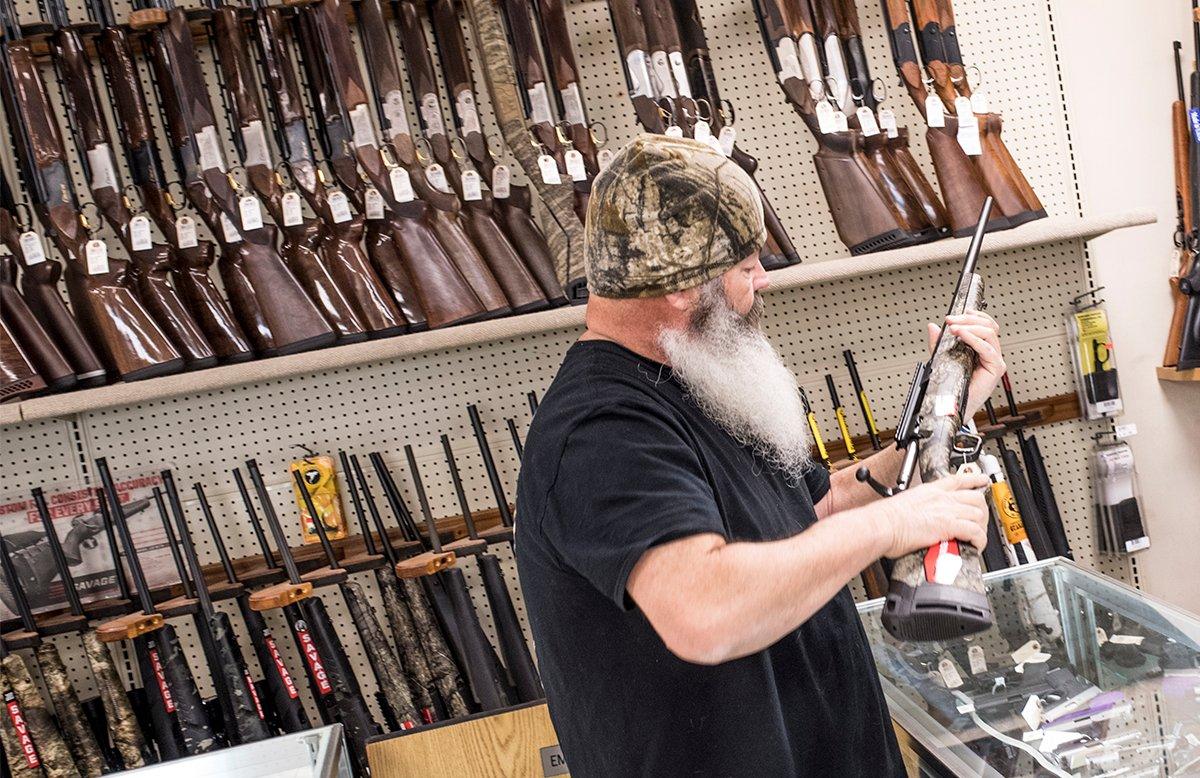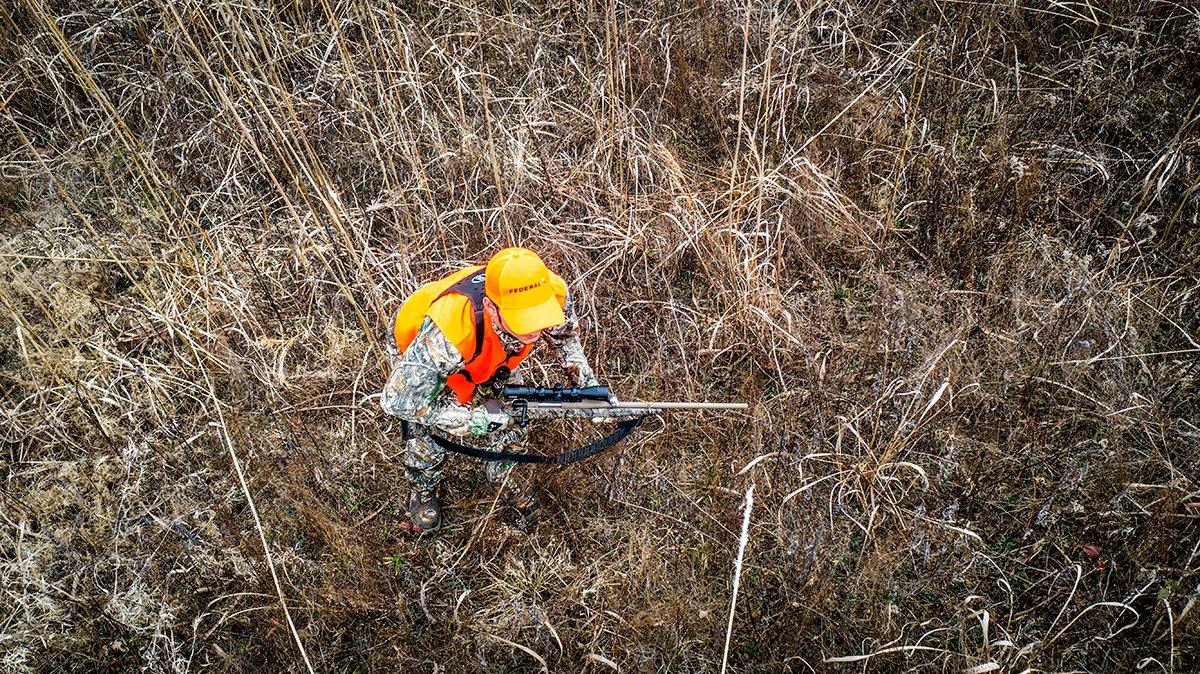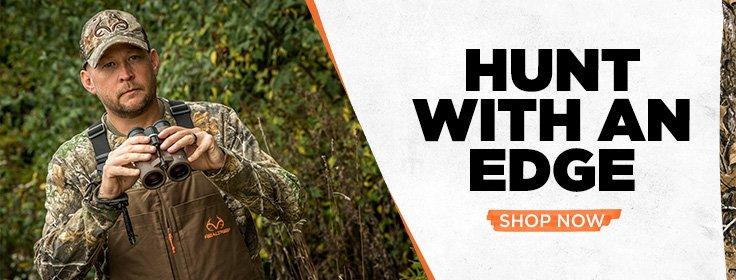COVID-19 has brought a new class of hunters to the whitetail woods. If you're one of them, here's solid advice on selecting your first gun, scope, and ammo.
I've longed suspected that a lot of young guys and gals have spent years sitting on the fence about deer hunting. Looks kind of cool on video and social, but is it for me?
Then came COVID. Last fall, tired of being cooped up and masked up and intrigued by the idea of bringing home some organic red meat with their own bloody hands, record numbers of millennials and Gen-Z people took the plunge and went hunting for the first time. In some states, license sales and deer permits were up 5% to 10%. In one of the most exciting developments in the hunting world in decades, a new breed of younger, more diverse deer hunters was born.
The challenge now is to keep you engaged and coming back this fall and the next and the next. And we hope you'll bring friends. We baby boomers and Joneses are hanging in there, but we're getting old. The more new blood we bring into the fold, the better for the sport, and for the management of deer herds across the country.
For less money than many of you pay in rent each month, you can buy a brand-new, highly dependable, and accurate rifle that will kill a deer cleanly.
You younger guys and gals grew up with phones and tablets in your hands. You research and expect the best gear at the best price. Good. Because the world's most visionary gun-makers have you covered and are building quality rifles designed specifically for the new breed of utilitarian meat hunter.
For less money than many of you pay in rent each month, you can buy a brand-new, highly dependable, and accurate rifle that will kill a deer cleanly one day this November — and one day 50 years from now. Do your research and choose wisely, and you can purchase the first and last deer rifle you'll ever need.
(Don't Miss: The 5 Best Bullet Styles for Deer Hunting)
Which Caliber?
First thing, choose the right caliber. Any rifle caliber that shoots a 130- to 165-grain bullet accurately out to 250 yards is perfect for hunting whitetails anywhere in North America.
Two old-school cartridges that every man and woman should consider for their first rifle are the relatively light-kicking and smooth-to-shoot .270 and 7mm-08. If you're a good-sized guy and can handle more recoil, check out the .308, .30-06, and 7mm Rem. Mag. There are dozens more classic and proven cartridges out there, but go with one of my top five and you'll be happy.
In your research you'll run across newer rounds, most notably the 6.5 Creedmoor. This cartridge was introduced in 2008 primarily for long-range target shooting, but it quickly (and curiously, in my opinion) developed a rabid following with hunters, particularly the social media and chat room crowd.
While I have not jumped on the 6.5 Creed bandwagon yet, Will Brantley, my colleague here on the blog, admits to using this flat-shooting, light-kicking cartridge, and killing deer with it, more and more these days. Check it out.
(Don't Miss: 15 Tips for One-Shot Kills)
Rifle Features to Look For
Go with a bolt action. Virtually all of today's modern bolt guns are strong and dependable. While some rifles will shoot better than others right out of the box, any new bolt action you purchase will be more than accurate enough for meat hunting. All you really need is a rifle/scope/ammo combo that will shoot a three-shot group of bullets that measures 2 inches in diameter at 100 yards.
Barrels on today's hunting rifles are generally 20 to 24 inches long; any of these lengths is fine, with minimal differences in accuracy and velocity. Most of today's functional, affordable rifles have lightweight synthetic stocks that are tough, look good, and shed rain.
For liability reasons, many new rifles come from the factory with trigger pulls approaching 5 pounds. You can teach yourself to shoot a heavy trigger well with practice, but you will shoot a rifle with a crisp-breaking, 3 1/2- to 4-pound trigger better. While adjusting the trigger weight on many new rifles is relatively easy, I strongly recommend you have an experienced gunsmith at your local shop do it for a small fee.
Here are four nice rifles that fit the criteria above. Any one of them will serve you well in the deer woods your first time out and for years and decades to come. There are many other good ones out there, so do your homework.
(Check Out: Realtree Logo Black Mesh Back Richardson Hat)
Savage Model 11/111
This rifle has a black synthetic stock and a carbon-steel, 22-inch barrel. A top feature is the Savage AccuTrigger. The rifle comes in either right- or left-hand models and with a Bushnell 3-9x40mm riflescope mounted on top and bore-sighted. Chambered for a wide variety of deer hunting cartridges, from .243 to .30-06.
MSRP: $549
Ruger American Standard
This rifle has a one-piece, three-lug bolt, a well-designed composite stock, a free-floated 22-inch barrel, and an adjustable trigger. The Ruger American was one of the first specially designed and no-frills deer hunting rifles to hit the market a few years ago, and it has gained a reputation as a durable, dependable, and accurate shooter, offering seven popular whitetail calibers.
MSRP: $559
Franchi Momentum Bolt-Action
The composite stock combines unique raised curves and crisp checkering for a good look and feel. It features a crisp trigger, a two-position safety, and a free-floated, 24-inch hammer-forged barrel. Chambered for .243, .308, and 6.5 Creedmoor. A sharp-looking Elite model (6.5 Creed) with a Realtree Excape stock and a one-piece Picatinny rail for scope mounting is available.
MSRP: $609 and up
CZ 557 Eclipse
I carried this lightweight, well-balanced rifle in .30-06 for three months last fall and shot four whitetail bucks with it. The push-feed action and cold hammer-forged barrel (20 inches) are dependable and accurate. Choose 6.5 Creedmoor, .308, or .30-06.
MSRP: $659
Scope for Your Deer Rifle
A good, all-purpose scope for your rifle is either a variable 2.5-10X (X=power of magnification) model or a 3-9X. You surely want a standard duplex crosshair reticle. My rule of thumb is that your scope should cost as much as or more than the rifle you purchase. The better quality of the scope on your gun, the better you'll see and distinguish deer in all light conditions, and the more accurately you'll shoot.
Ammo for Deer Hunting
This is the hard part, and the easy part. Hard, because we are still in the throes of a COVID-induced ammunition shortage, although it is getting better. Easy, because today's excellent standard factory loads with proven bullet designs are all you need to kill a whitetail cleanly.
Once you've purchased a rifle, buy a minimum of two 20-round boxes of standard and relatively inexpensive loads of matching caliber. Good choices are Remington Express with controlled-expansion Core-Lokt bullets; Hornady American Whitetail with InterLock bullets; and Federal Power-Shok with lead-core jacketed soft-point bullets.
Ammo prices are all over the place these days but expect to pay $26 to $30 a box. You could pay twice as much per box for premium loads from these manufacturers and others, but take my word, you don't need it. I have shot dozens of bucks with standard loads over the years, and they perform wonderfully on deer.
(Don't Miss: 5 Guns Every Outdoorsman Needs)
Sight-In and Shooting Tips
You can mount a scope on your new rifle at home — it's not rocket science and there are lots of how-to videos on YouTube — but I strongly suggest you have a gunsmith at your local gun shop do it, especially for your first rifle. The No. 1 factor in your rifle's accuracy will be how the scope is attached to the gun with scope base mounts and rings. A solid, well-mounted scope will enable you to shoot accurately, and the point of impact of your bullets will not change over time. I've had the same scopes mounted on some of my rifles for 10 years and they still shoot straight. Conversely, you'll never get great accuracy with a scope that is not mounted properly and misaligned.
Once the scope is mounted on the rifle, have the shop guy bore-sight it, which means he'll look down through the barrel and then up through the scope, eyeball where the crosshair should go on a target's bull's-eye and then make the initial scope settings. This should get you close to zero, but you still must go to a shooting range or safe place on your land with a good backstop and fire rounds at a target to fine-tune things.
For your sighting-in session, make sure you have a solid place to sit and rest your rifle on sandbags, or lie flat and shoot from the prone position with the rifle pinned on bags or a benchrest bipod. Never try to sight in when you are unsteady or uncomfortable, sitting awkwardly with your rifle wobbling around. You'll never shoot accurately or consistently that way. Not to mention your confidence can get shattered when shots from an unsteady rifle hit all over a target. Always make sure you and the rifle are super steady and safe before each shot.
Fire three shots from a good rest and you should see a cluster pattern of where the bullets are hitting, or a group. Then move the scope's elevation knob (top of the scope) to move the crosshair, and the impact of your bullets, up or down toward the target's bull's-eye. To move shots left or right, use the windage knob on the side of the scope. This is very easy to do.
Once your bullets are cutting the bull's-eye and grouping 2 inches or closer together, click the top elevation knob to move your bullets to hit 1 inch high over the bull's-eye at 100 yards. That way you can plant the scope's crosshair on the front shoulder of a deer (always aim for this relatively large lung-heart area) that is standing anywhere from 50 to 200 yards away. Hold steady, press the trigger, fire, and drop the animal cleanly without worrying about how many inches your bullet might drop in elevation on a longer shot.
My best advice: Hold your shots at deer to 200 yards or less, always pin the crosshair smack in the middle of the deer's shoulder blade, take a half-breath, and squeeze the trigger. You'll get him, or the doe, every time.
Fire more practice shots at targets until you start to get a good feel for the rifle and its recoil, and the trigger pull. The more days you shoot before the season opens this November, the better you will shoot in the woods, and the more confident you'll be of achieving what we all want — one-shot kills.
(Don't Miss: 21 Riflescope Tips for Hunters)









